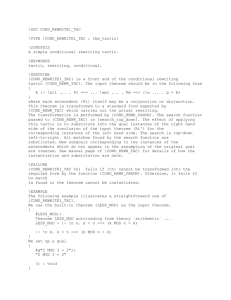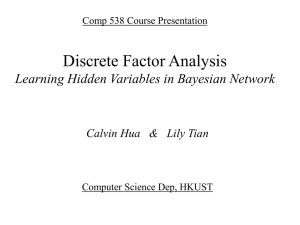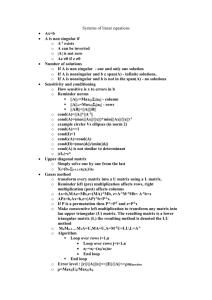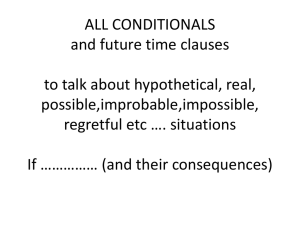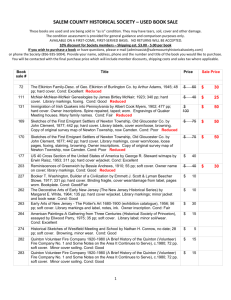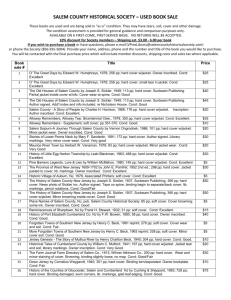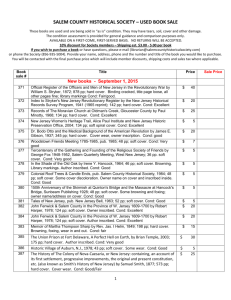\DOC COND_REWR_TAC \BLTYPE COND_REWR_TAC : (term
advertisement
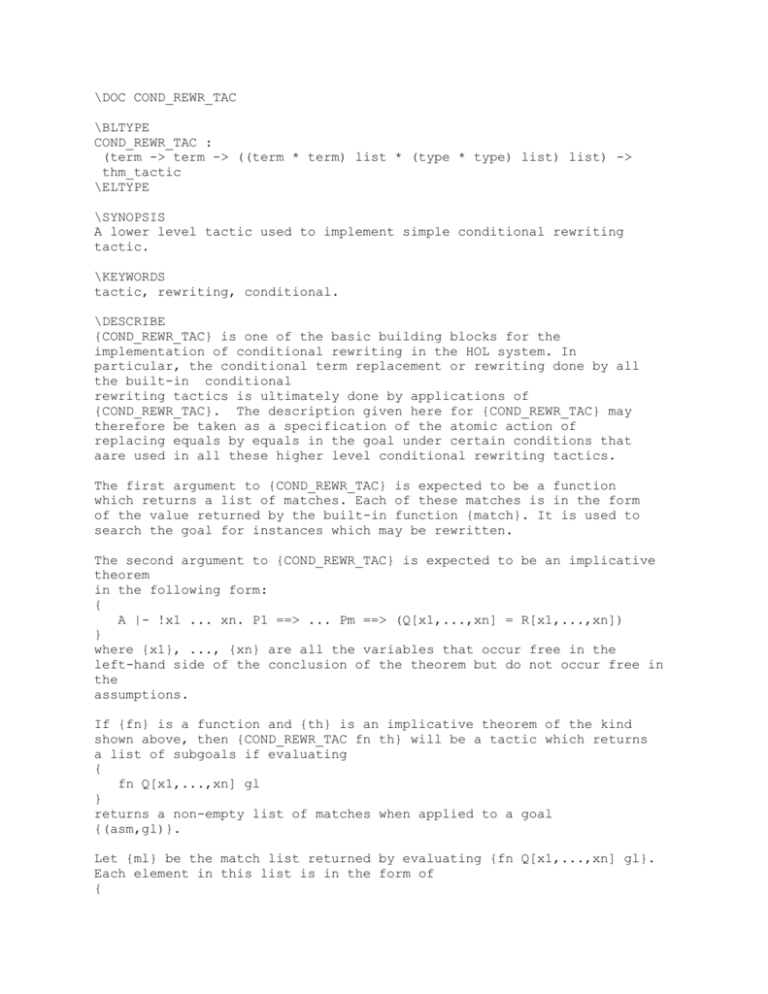
\DOC COND_REWR_TAC
\BLTYPE
COND_REWR_TAC :
(term -> term -> ((term * term) list * (type * type) list) list) ->
thm_tactic
\ELTYPE
\SYNOPSIS
A lower level tactic used to implement simple conditional rewriting
tactic.
\KEYWORDS
tactic, rewriting, conditional.
\DESCRIBE
{COND_REWR_TAC} is one of the basic building blocks for the
implementation of conditional rewriting in the HOL system. In
particular, the conditional term replacement or rewriting done by all
the built-in conditional
rewriting tactics is ultimately done by applications of
{COND_REWR_TAC}. The description given here for {COND_REWR_TAC} may
therefore be taken as a specification of the atomic action of
replacing equals by equals in the goal under certain conditions that
aare used in all these higher level conditional rewriting tactics.
The first argument to {COND_REWR_TAC} is expected to be a function
which returns a list of matches. Each of these matches is in the form
of the value returned by the built-in function {match}. It is used to
search the goal for instances which may be rewritten.
The second argument to {COND_REWR_TAC} is expected to be an implicative
theorem
in the following form:
{
A |- !x1 ... xn. P1 ==> ... Pm ==> (Q[x1,...,xn] = R[x1,...,xn])
}
where {x1}, ..., {xn} are all the variables that occur free in the
left-hand side of the conclusion of the theorem but do not occur free in
the
assumptions.
If {fn} is a function and {th} is an implicative theorem of the kind
shown above, then {COND_REWR_TAC fn th} will be a tactic which returns
a list of subgoals if evaluating
{
fn Q[x1,...,xn] gl
}
returns a non-empty list of matches when applied to a goal
{(asm,gl)}.
Let {ml} be the match list returned by evaluating {fn Q[x1,...,xn] gl}.
Each element in this list is in the form of
{
([(e1,x1);...;(ep,xp)], [(ty1,vty1);...;(tyq,vtyq)])
}
which specifies the term and type instantiations of the input theorem
{th}. Either the term pair list or the type pair list may be empty. In
the case that both lists are empty, an exact match is found, i.e., no
instantiation is required. If {ml} is an empty list, no match has been
found and the tactic will fail.
For each match in {ml}, {COND_REWR_TAC} will perform the following:
1) instantiate the input theorem {th} to get
{
th' = A |- P1' ==> ... ==> Pm' ==> (Q' = R')
}
where the primed subterms are instances of the corresponding
unprimed subterms obtained by applying {INST_TYPE} with
{[(ty1,vty1);...;(tyq,vtyq)]} and then {INST} with
{[(e1,x1);...;(ep,xp)]};
2) search the assumption list {asm} for occurrences of any antecedents
{P1'}, ..., {Pm'};
3) if all antecedents appear in {asm}, the goal {gl} is reduced to
{gl'} by substituting {R'} for each free occurrence of {Q'}, otherwise,
in addition to the substitution, all antecedents which do not appear
in {asm} are added to it and new
subgoals corresponding to these antecedents are created. For example,
if {Pk'}, ..., {Pm'} do not appear in {asm}, the following subgoals
are returned:
{
asm ?- Pk' ... asm ?- Pm'
{{asm,Pk',...,Pm'}} ?- gl'
}
If {COND_REWR_TAC} is given a theorem {th}:
{
A |- !x1 ... xn y1 ... yk. P1 ==> ... ==> Pm ==> (Q = R)
}
where the variables {y1}, ..., {ym} do not occur free in the
left-hand side of the conclusion {Q} but they do occur free in the
antecedents, then, when carrying out Step 2 described
above, {COND_REWR_TAC} will attempt to find instantiations for these
variables from the assumption {asm}. For example, if {x1} and {y1}
occur free in {P1}, and a match is found in which {e1} is an
instantiation of {x1}, then {P1'} will become {P1[e1/x1, y1]}. If a term
{P1'' = P1[e1,e1'/x1,y1]} appears in {asm}, {th'} is instantiated with
{(e1', y1)} to get
{
th'' = A |- P1'' ==> ... ==> Pm'' ==> (Q' = R'')
}
then {R''} is substituted into {gl} for all free occurrences
of {Q'}. If no consistent instantiation is found, then {P1'} which
contains the uninstantiated variable {y1} will become one of the new
subgoals. In such a case, the user has no control over the
choice of the variable {yi}.
\FAILURE
{COND_REWR_TAC fn th} fails if {th} is not an implication of the form
described above. If {th} is such an equation, but the function {fn}
returns a null list of matches, or the function {fn} returns a
non-empty list of matches, but the term or type instantiation fails.
\EXAMPLE
The following example illustrates a straightforward use of
{COND_REWR_TAC}.
We use the built-in theorem {LESS_MOD} as the input theorem, and the
function
{search_top_down} as the search function.
{
#LESS_MOD;;
Theorem LESS_MOD autoloading from theory `arithmetic` ...
LESS_MOD = |- !n k. k < n ==> (k MOD n = k)
|- !n k. k < n ==> (k MOD n = k)
#search_top_down;;
- : (term -> term -> ((term # term) list # (type # type) list) list)
}
We set up a goal
{
#g"2 MOD 3 = 2";;
"2 MOD 3 = 2"
() : void
}
and then apply the tactic
{
#e(COND_REWR_TAC search_top_down LESS_MOD);;
OK..
2 subgoals
"2 = 2"
[ "2 < 3" ]
"2 < 3"
() : void
}
\SEEALSO
COND_REWRITE1_TAC, COND_REWRITE1_CONV, COND_REWR_CONV, COND_REWR_CANON,
search_top_down.
\ENDDOC
